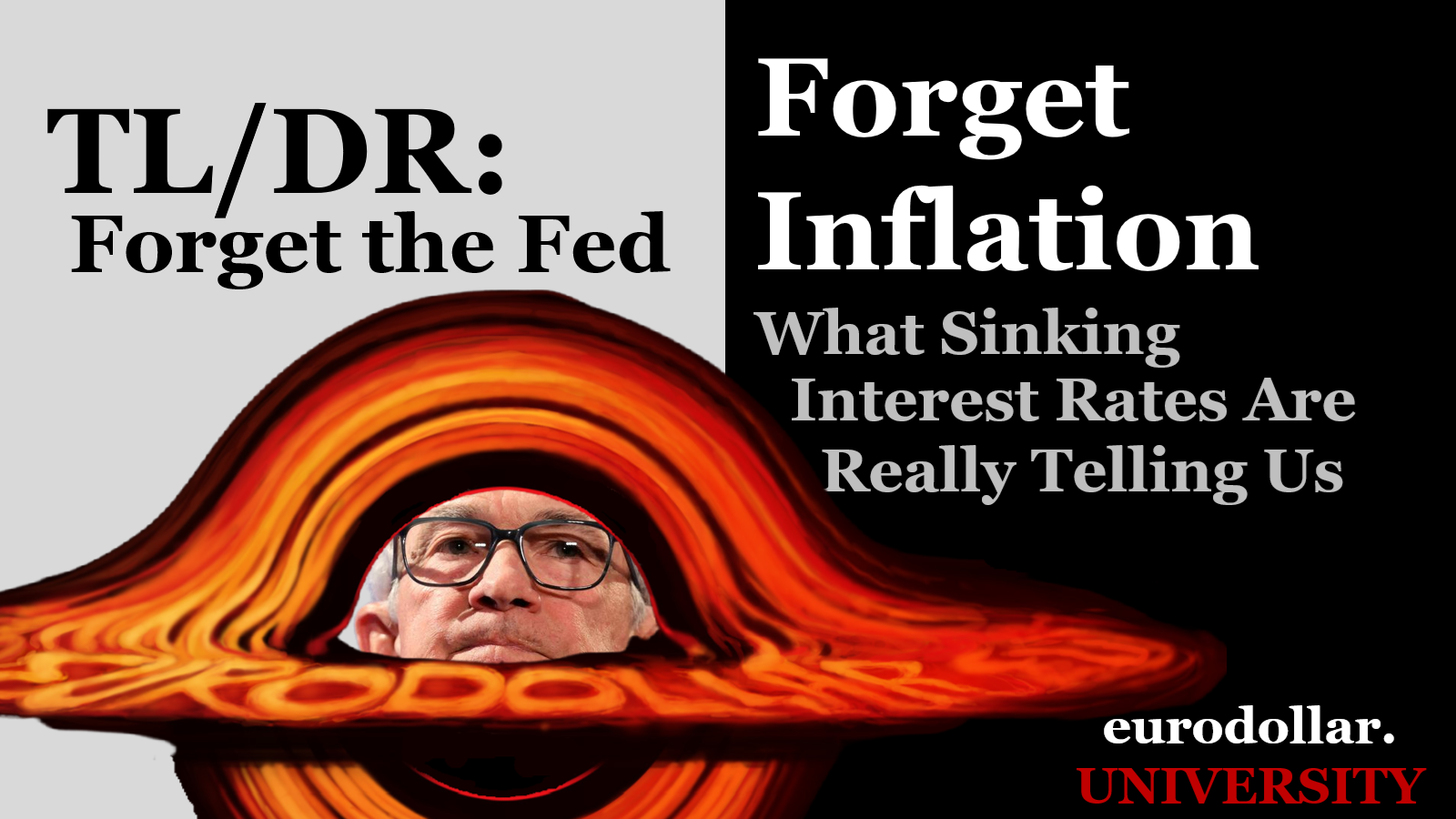If you aren’t a Eurodollar University member, become one and get access to Classroom vids, The Basics, Weekly Recaps, Q&As, and all the special presentations right here.

Member Video #32: More Repo Complexity
Continuing our examination on repo segments, in Classroom Video 32 we take a closer look at triparty repo. This one might be more well-known and covered by regulators along with mainstream sources, it’s full purpose certainly hasn’t been. Playing a key role in the 2008 crisis, triparty is one of the main engines of collateral flow.

Member Video #31: Repo Complexity
The operation and function of the eurodollar system is, in a word, complex. It almost has to be in order to provide the necessary capacities to get money, credit, and even credit transformation circulating all throughout this eurodollar world. Even as something as simple, or what sounds simple, like repo is, in a word, complex. It’s important to unpack of it as much as we can, which we’ll do in Classroom Video 31.

Forget Inflation (and the Fed) PART 3
The presentation only a mishandled airplane could delay. Now a member exclusive, rates are indeed plunging and after figuring it out what market signals really mean, in Part 3 we put them all in the same place for the conclusion.

Forget Inflation (and the Fed) PART 2
The presentation only a mishandled airplane could delay. Now a member exclusive, Forget Inflation reviews the fundamentals of interest rates, interest rate markets, and rates the economy's chances given the very interesting recent turns for interest rates that are now "unexpectedly" plunging.

Forget Inflation (and the Fed) PART 1
The presentation only a mishandled airplane could delay. Now a member exclusive, Forget Inflation reviews the fundamentals of interest rates, interest rate markets, and rates the economy's chances given the very interesting recent turns for interest rates. They aren't toward inflation.

Member Video #30: Hierarchy
In EDU's Complexity series, we highlighted the importance of the breakdown in hierarchy after August 2007, but we didn't go into details about what that really meant. Until now. Classroom Video #30 examines how dealer horizontal and vertical integration of ledgers leads to a number of essential benefits including hierarchy.

Member Video #29: Flow Motivations
In Classroom Video #29, we’re going to focus on the microscale of the individual dealer. We’ve covered a good bit on what it does, so now we’ll examine why. Taking a peek at motivations and capabilities to better understand and appreciate details behind big picture concepts.

Member Video #28: Integrating Ledgers
In Classroom #28, we take a further look at the critical dealer system from three perspectives. Starting with the macroscopic then working through the multiplier/circulation we end up back in the microscale thinking about individual incentives and perspective. Just like the eurodollar is a series of integrated ledgers, that process of integration comes from a combination of purposes spread out across this trio of layers.

Member Video #27: Dealer Center
Why was the September 2019 repo dislocation so significant? It wasn’t how far money rates rose. Instead, the episode actually made officials partially admit the truth. Everything is about dealers and here in Classroom #27 we’re going a little further in the black hole. Armed with a diagram and experience, we’ll start putting theory together with observation.

Member Video #26: Collateral Center
These “grad” level classroom videos aim to bring us close to actual practice. Having access to real data would be nice just not possible. Instead, we’ll source indirect access via the findings of those who have been privileged. Thankfully, we can reveal quite a lot this way even if still not quite the full picture.

Member Video #25: Dealer Time
We are ready to take the Classroom videos to the next level. From purposefully simple and highly stylized examples, from here we’ll step up and make our investigations more realistic. And that means intensity as well as complexity.

Member Video #24: Collateral Dealing
We talk about risk aversion as the biggest factor for monetary conditions in the eurodollar system, but what does that actually mean? Taking our discussion of collateral and its importance to the next step, we have to narrow the focus and get a little more specific.

Member Video #23: Collateral Practices
One of the more infamous episodes from the most infamous Wall Street firm: Solly’s folly. The firm flaunted Treasury auction practices, rules, and repeated demands. Called an “inept little scam” by the media at the time, the only accurate word in that description was last one. It was hardly inept and the cheating was widespread and the reason why illustrated everything about eurodollar maturity and its domination.

Member Video #22: Collateral Multiplier
This is a long one but a necessary examination and well worth the detail. After exposing the ‘dirty secret’ behind collateral reusing, this video takes the next step. Clocking in at nearly an hour, we’re going to go deeper into the shadow money system taking the collateral multiplier head on.

Member Video #21: Securities Lending
Earlier Classroom Videos have looked into collateral and how important it is to the eurodollar system, providing context and documenting key concepts. With the background out of the way, it’s finally time to go much farther, diving straight into the meat of the topic. Starting with how securities lending isn’t, um, lending.

Member Video #20: Expanding Collateral
We left off in Video #19 in the 1890s when the federal government retired debt, making it difficult for banks to get their hands on the Treasuries banks needed for elastic currency. So, banks experimented and created currency in other ways. Here in #20, we find in the 1990s the federal government retiring debt, making it difficult for banks to get their hands on the Treasuries banks needed for elastic currency. So, banks…

Member Video #19: Borrowing USTs
Going all the way down the rabbit hole of eurodollar collateral proliferation first requires taking a step back in time – way back. Banks didn’t invent borrowing US Treasuries in the sixties and seventies, more like eighteen-sixties and seventies. Troubling and persistent safe asset shortage forced a new form of bank-invented money elasticity, and sure enough the authorities failed to stay on top of it.

Member Video #18: Collateral History
T-bills, specifically, and US Treasury debt, in general, have dominated the collateralized monetary landscape right from the beginning. Some history behind what that was, and how it paved the way for the eventual mass production of eurodollar money. But first, it had to overcome its own history.

Member Video #17: Acceptances & More
An out-of-luck circus, an enraged elephant, and an import bill issuer throwing ledger dollars down the drain. It’s an episode in acceptance history that sets up the paradigm shift propelling the eurodollar system out of its early “analog” phase toward the mass produced “digital” future of its maturity.

Member Video #16: Acceptances
An ancient practice that became one key element to the first phase of globalization. Acceptances were maybe the eurodollar system at its best, an efficient way to operate a global reserve system. Maybe too efficient, the Great Inflation after all. In this classroom session, we go over acceptances, what they are, why they mattered then, and how they set the world up for the second phase.
